Introduction to Wine Tours in Spain
Spain’s tapestry of winemaking is an intricate weave of history, tradition, and innovation, a colorful mosaic that has evolved over centuries. This guide takes you on a sensory journey through Spain’s most celebrated wine regions, an odyssey that promises more than just the sampling of exquisite wines; it’s a voyage into the heart of Spanish culture itself.
In the sun-drenched terrains of Ribera del Duero, the vineyards tell a story of resilience and passion. Here, the robust reds, particularly the renowned Tempranillo, are not just wines; they are liquid narratives of a land’s struggle and triumph. Each sip reveals layers of flavor, complexity, and a history that dates back to the Roman times. The wines from Ribera del Duero are a testament to the region’s dedication to preserving tradition while embracing modern techniques.
Venture into the effervescent world of Cavas near Barcelona, and you step into a realm where wine-making is an art form. The crisp, sparkling Cavas are a jubilant celebration of Spanish winemaking prowess. Born in the picturesque Penedès region, these wines offer a delightful contrast to the bold reds of Ribera del Duero. Each bubble that dances to the top of the glass carries with it the essence of the Mediterranean – a blend of sunny skies, a gentle breeze, and the spirit of festivity that is quintessentially Catalan.
But Spanish wine tours offer more than just a tasting experience. They are an invitation to explore the scenic beauty of Spain’s diverse landscapes – from the rolling hills draped with vineyards to the quaint, rustic bodegas that dot the countryside. It’s an immersive experience where every sense is engaged. The sight of ancient vines, the sound of wine pouring into glasses, the smell of oak barrels aging in cellars, the touch of soil that has nurtured grapes for generations, and, of course, the taste of the wine itself – all combine to create a symphony of sensations.
Moreover, these tours are a gateway to understanding the cultural richness of Spain. Wine in Spain is not just a beverage; it’s a way of life. It’s about community, tradition, and a shared passion for quality and excellence. From the harvest festivals that mark the grape-picking season to the intimate wine-tasting sessions that bring people together, wine is the thread that weaves through the fabric of Spanish society.
In this guide, we invite you to uncork the magic of Spanish wines. Whether you are a connoisseur or a casual enthusiast, there is a discovery in every glass, a story in every bottle. Join us as we explore the celebrated wine regions of Spain, each offering its own unique blend of scenic beauty, cultural richness, and gastronomic delights.
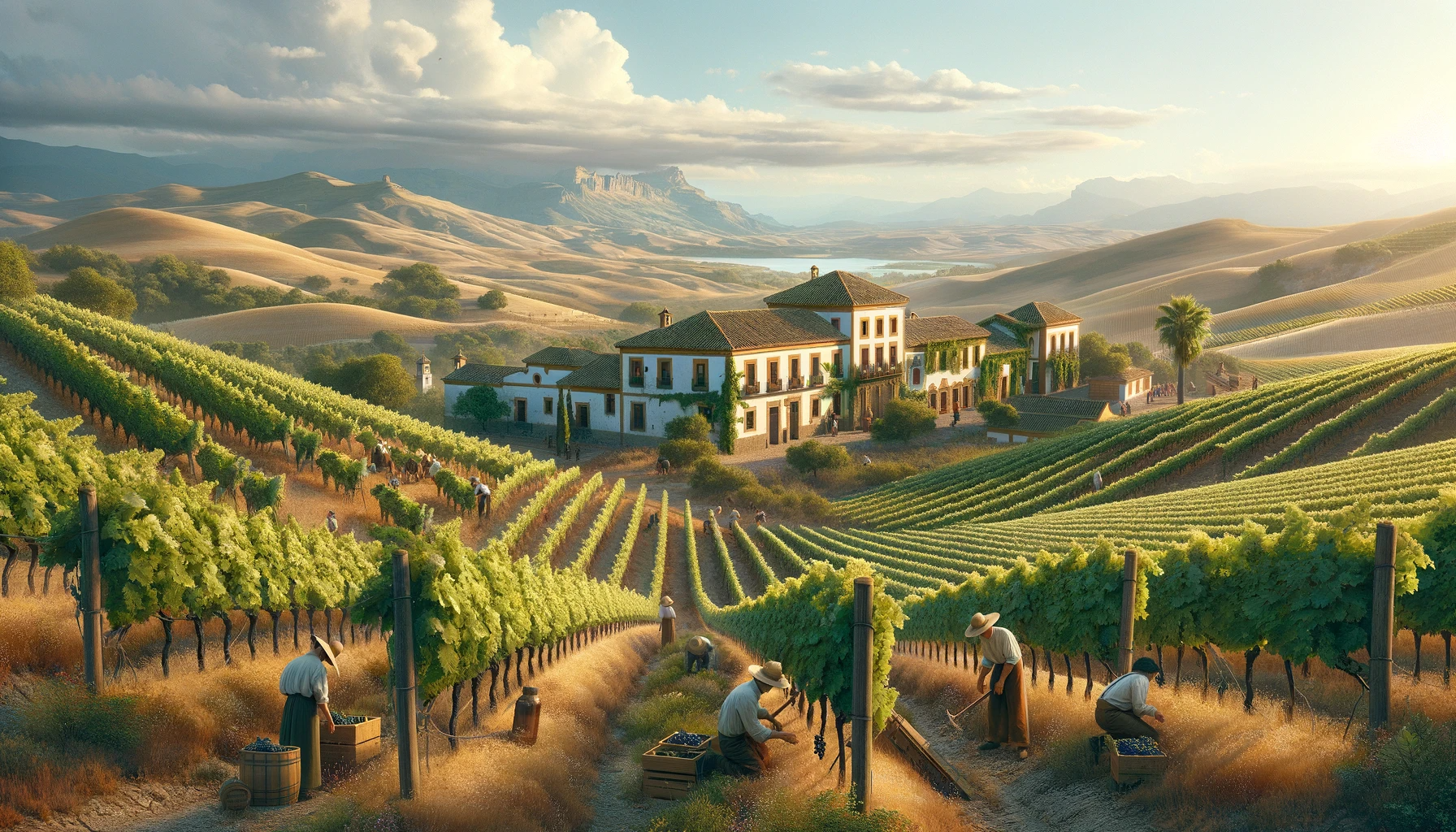
History and Culture of Winemaking in Spain
The history of winemaking in Spain is as rich and diverse as the country’s own landscape, deeply rooted in traditions that stretch back over millennia. In the rolling hills and valleys of Spain, ancient vines have thrived for centuries, their presence interwoven with the very fabric of Spanish history and culture.
Spanish winemaking began with the Phoenicians, who introduced the art to the Iberian Peninsula around 1100 BC. The Romans later expanded vine cultivation, appreciating the unique terroir of the region. But it was under the Moorish rule that Spanish viticulture faced its first significant challenge, as alcohol production was largely frowned upon. However, the Moors did contribute to the development of irrigation techniques, which were crucial for vine growing in the arid regions of Spain.
The reconquest of Spain by Christian forces in the 15th century heralded a new era for Spanish winemaking. Monasteries and abbeys became the centers of wine production, with monks cultivating vines and producing wine for religious purposes. This period marked the beginning of a wine culture that was deeply entwined with religion, tradition, and daily life.
The discovery of the New World opened Spanish wines to international markets, but it also brought challenges, including the devastating phylloxera plague in the 19th century, which destroyed vast swathes of vineyards. The silver lining to this disaster was the subsequent modernization of Spanish viticulture, as replanting efforts included the introduction of new grape varieties and updated cultivation techniques.
Despite these changes, the heart of Spanish winemaking remains in its traditional techniques, many of which continue to underpin modern practices. The use of oak barrels for aging, a method that dates back hundreds of years, is still prevalent, giving Spanish wines their distinctive flavor profiles. Regions like Rioja and Ribera del Duero are renowned for their barrel-aged reds, which strike a delicate balance between the fruitiness of the grapes and the complexity imparted by oak.
In addition to oak aging, the practice of blending different grape varieties to create complex flavors is a hallmark of Spanish winemaking. This technique, refined over centuries, allows winemakers to craft wines that are not only representative of their geographic origin but also of their cultural heritage.
Spain’s diverse climates and soils contribute to the wide variety of wine styles found across the country. From the light and crisp Albariño wines of Galicia to the rich and robust Tempranillo of La Rioja, each region offers a distinct wine style, shaped by its history and terroir. This diversity is a testament to the adaptability and resilience of Spanish winemaking, which has embraced innovation while honoring tradition.
Today, Spanish wines are celebrated worldwide for their quality, diversity, and unique character. The story of these wines is a narrative of survival, adaptation, and passion – a narrative that is as compelling as the wines themselves. As you sip a glass of Spanish wine, you are not just tasting a beverage; you are experiencing a piece of Spain’s rich history and cultural legacy.
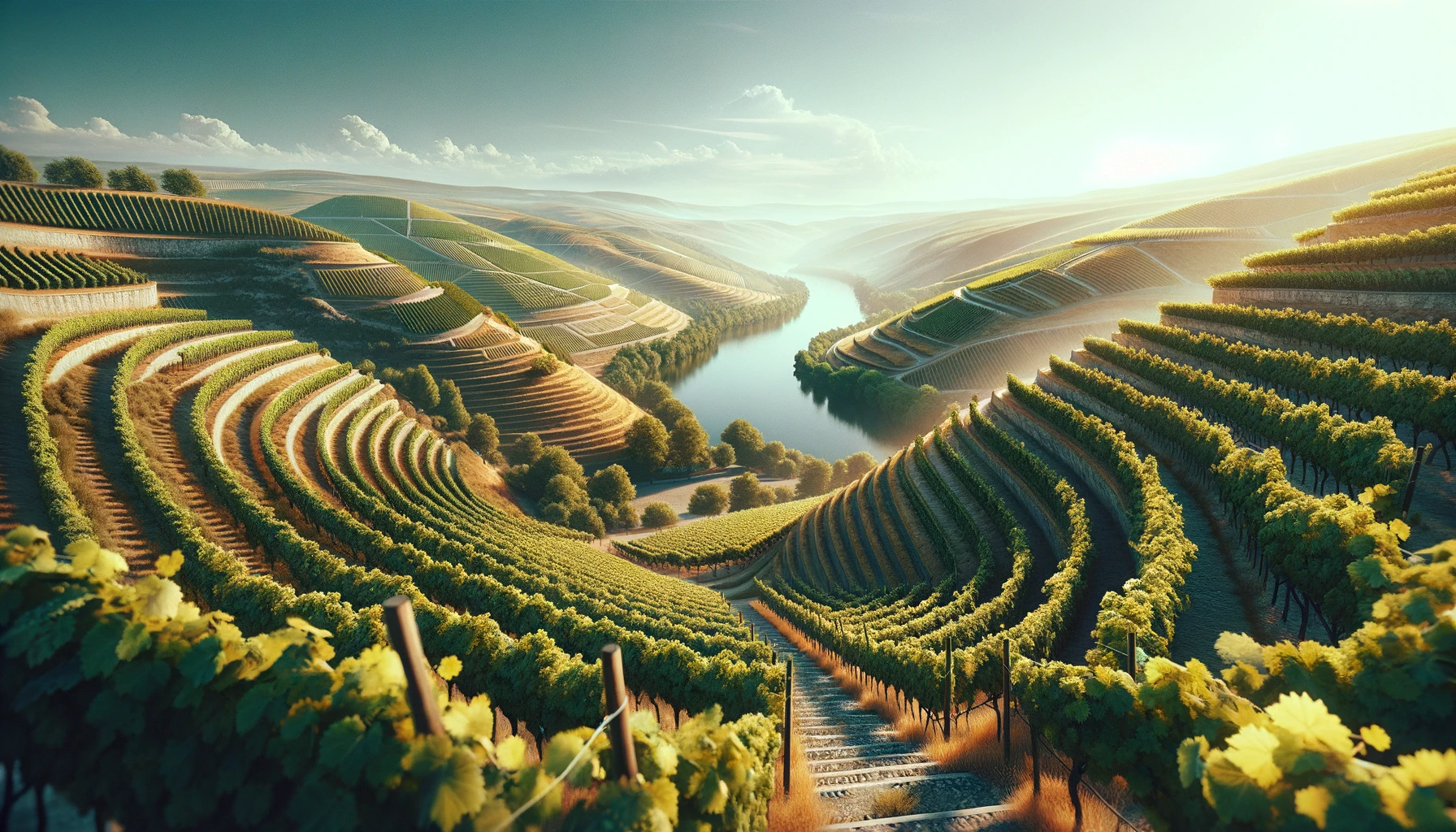
Major Wine Regions of Spain
Spain’s wine regions are as diverse and vibrant as the country itself, each offering unique experiences that reflect their distinct geographical and cultural identities. From the powerful Tempranillo of Ribera del Duero to the sparkling Cavas near Barcelona, Spain’s wine regions are a testament to the country’s rich viticultural heritage.
Ribera del Duero: Nestled along the Duero river, Ribera del Duero is a gem in the crown of Spanish winemaking. Renowned for its powerful and complex Tempranillo wines, the region has gained international acclaim for its exceptional quality. The continental climate, marked by cold winters and hot summers, along with the limestone-rich soils, contribute to the unique character of Ribera del Duero wines. These wines are known for their deep cherry-red color, robust tannins, and flavors that beautifully blend fruitiness with earthy undertones. Aging in oak barrels adds layers of complexity, producing wines that are not just a drink but a rich sensory experience.
Rioja: Perhaps the most prestigious of all Spanish wine regions, Rioja is synonymous with excellence in winemaking. Spanning parts of the Basque Country and La Rioja province, this region is celebrated for its balanced and elegant wines, predominantly made from the Tempranillo grape. Rioja’s microclimates and varying soil types contribute to the diversity of wine styles, from light and fruity to rich and oaky. The region’s commitment to blending tradition with innovation is evident in its categorization system, which ranges from young ‘Crianzas’ to mature ‘Gran Reservas’. A tour through Rioja’s vineyards and bodegas is a journey through time, where centuries-old practices meet modern techniques.
Alicante, Benidorm, Valencia: The eastern coastline of Spain, encompassing Alicante, Benidorm, and Valencia, offers a wine experience imbued with Mediterranean charm. These regions are known for their diverse range of wines, influenced by the proximity to the sea and the mild climate. Varietals like Monastrell and Moscatel thrive here, producing wines that range from robust reds to aromatic whites. The wines of this region reflect the essence of the Mediterranean – bright, lively, and full of sun-kissed flavors.
Madrid: Madrid, the capital city of Spain, is also an emerging wine region that surprises with its variety of styles. The region benefits from the altitude of the central plateau, which contributes to the significant diurnal temperature variation, essential for balanced ripening of grapes. Madrid’s vineyards are gaining recognition for their quality wines, particularly the reds from native grape varieties like Garnacha and Tempranillo, and whites from Malvar and Airén. The wines from Madrid are a delightful discovery for those looking to explore beyond the traditional regions.
Barcelona: While not a wine region in its own right, Barcelona is the gateway to the Catalan wine territories. It is particularly renowned for its proximity to the Penedès region, the heartland of Cava production. Cavas are Spain’s answer to champagne – sparkling wines made using the traditional method, but with a distinct Catalan twist. The wineries near Barcelona offer tastings of these effervescent delights, set against the backdrop of Catalonia’s stunning landscapes.
Each of these regions, with their unique climates, soils, and grape varieties, contributes to the rich tapestry of Spanish winemaking. A tour through Spain’s wine regions is not just about tasting different wines; it’s about experiencing the diversity of Spanish culture, history, and landscape – one glass at a time.
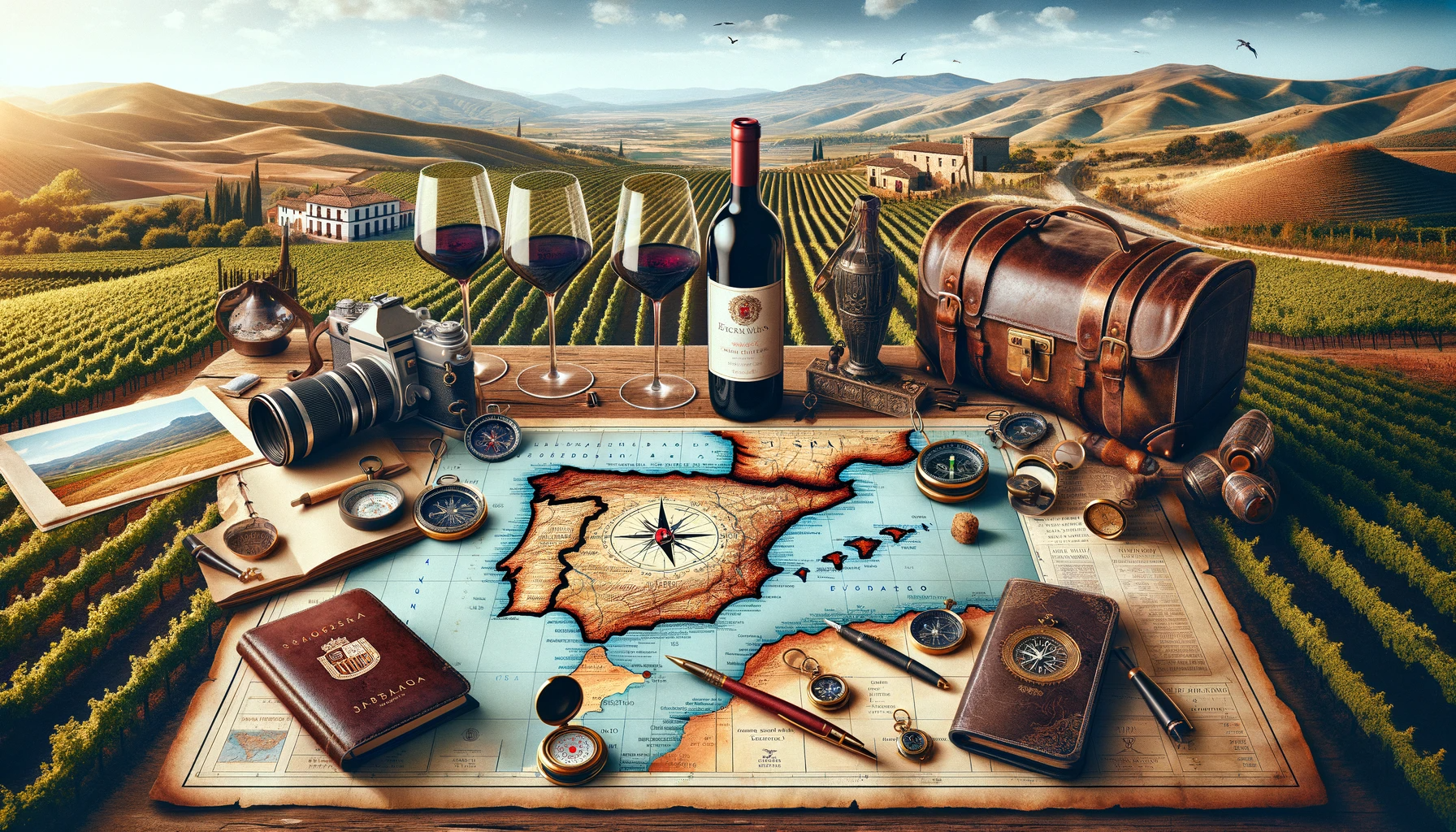
Planning Your Wine Tour in Spain
Embarking on a wine tour in Spain is an adventure that blends cultural exploration with gastronomic indulgence. Whether you’re dreaming of a luxurious getaway or a rustic journey into the heart of Spain’s countryside, planning your tour is key to ensuring an unforgettable experience. Here, we offer practical advice to help you navigate the rich tapestry of Spanish wine tours.
Best Times to Visit:
Timing is crucial when planning a wine tour. The ideal time to visit Spain’s wine regions varies, but generally, the harvest season, known as “la vendimia,” which occurs from late August to early October, offers a unique opportunity to witness the winemaking process in full swing. Spring, from April to June, is another excellent time, with vineyards in full bloom and milder weather. However, if you prefer to avoid crowds and enjoy a more tranquil experience, consider visiting in the off-peak seasons, like late fall or winter.
Types of Tours Available:
Spain’s wine regions offer a variety of tour options to cater to different tastes and interests:
- Guided Group Tours: Ideal for those who enjoy socializing and learning in a group setting. These tours often include transportation, expert guides, and visits to multiple wineries.
- Private Tours: Perfect for a more personalized experience. Private tours allow for customization and often provide access to exclusive wineries not open to the public.
- Self-Guided Tours: For the independent traveler, renting a car and exploring at your own pace can be a rewarding experience. This option offers flexibility, but it’s essential to plan your route and winery visits in advance.
- Luxury Tours: These tours offer the ultimate indulgence, often including gourmet meals, deluxe accommodations, and visits to top-tier wineries.
- Adventure Tours: For the more adventurous, some regions offer biking or hiking wine tours, combining outdoor activities with wine tastings.
Making the Most of Your Experience:
- Research the Regions: Each Spanish wine region has its unique characteristics. Researching ahead of your visit will enhance your appreciation and help you choose the region that aligns with your tastes.
- Book in Advance: Especially during peak seasons, it’s advisable to book your tours and accommodations well in advance.
- Consider Local Cuisine: Many wineries offer food pairings or have restaurants serving local cuisine. Indulging in regional dishes can greatly enhance your wine-tasting experience.
- Transportation: If you’re not on a guided tour with transportation included, consider hiring a driver or using local transportation options, especially if you plan to indulge in multiple tastings.
- Ask Questions: Don’t hesitate to engage with winemakers or tour guides. Their insights can deepen your understanding and appreciation of the wines.
A well-planned wine tour in Spain can be a journey through the heart of Spanish culture, offering a taste of the country’s rich history, stunning landscapes, and culinary excellence. With the right preparation, your Spanish wine tour can be an experience that tantalizes the senses and leaves lasting memories.
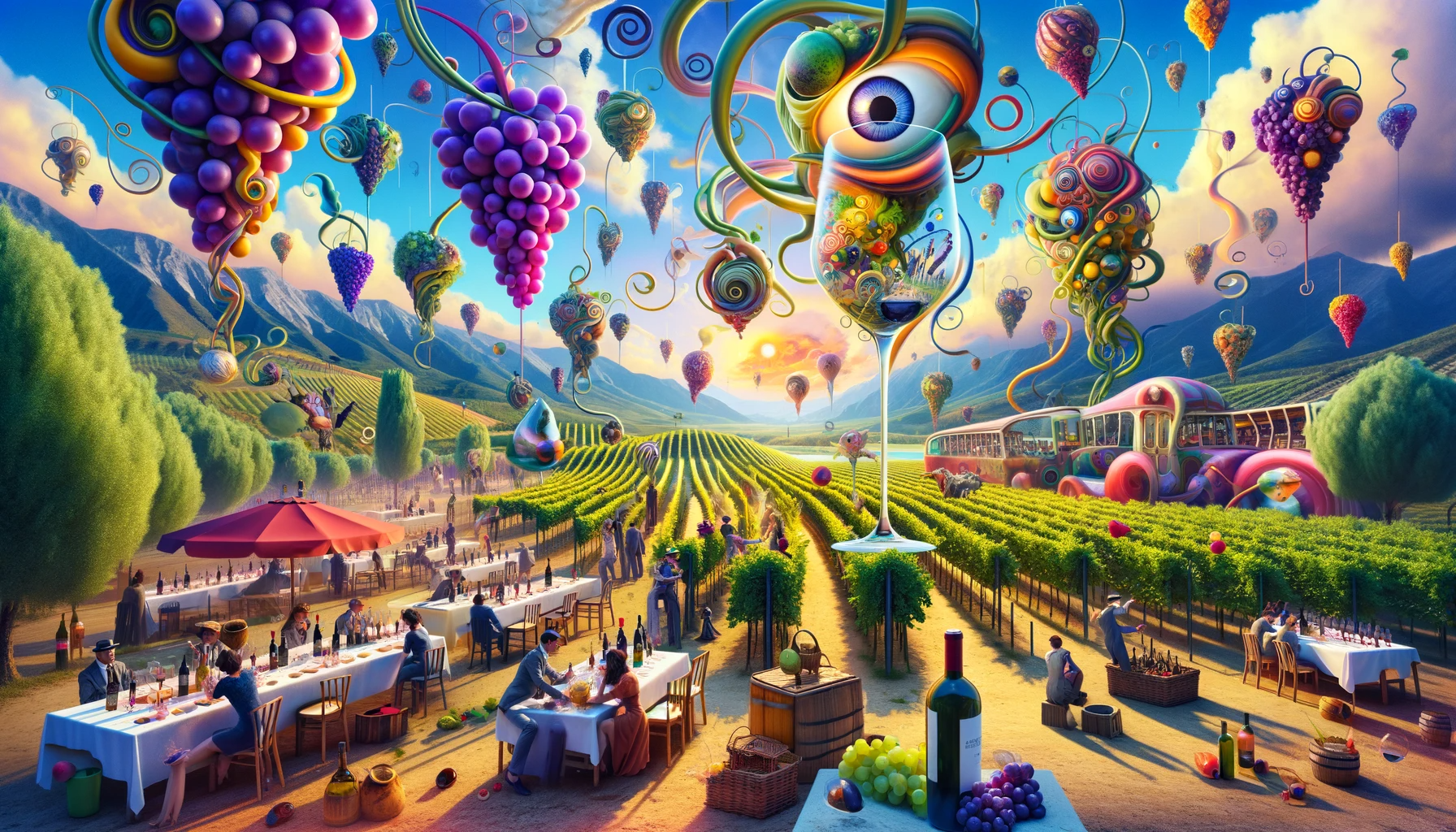
Interactive Wine Events in Spain’s Wine Country
Spain’s wine country offers more than just the traditional tasting room experience; it invites visitors to immerse themselves in a world of interactive and engaging wine-related activities. These experiences provide a deeper connection to the wine, the land, and the culture, making your journey through Spain’s vineyards truly unforgettable.
Participate in Grape Harvests:
One of the most authentic experiences in Spanish wine country is participating in the grape harvest, known locally as “La Vendimia.” This typically takes place from late August to October, varying by region and climate. Joining the harvest allows you to be a part of the winemaking process from the very beginning. It’s a hands-on experience where you learn about the meticulous care that goes into selecting and picking grapes. The atmosphere is often festive, with music, traditional meals, and, of course, wine tasting, making it a culturally rich and enjoyable experience.
Blend Your Own Wine:
Several wineries offer the unique opportunity to blend your own wine. These workshops, led by skilled winemakers, teach you about different grape varieties, blending techniques, and the art of balancing flavors to create a harmonious wine. Not only is this a fun and educational experience, but it also allows you to leave with your own custom bottle of wine, a personalized souvenir of your time in Spain’s wine regions.
Food and Wine Pairings:
Understanding how food and wine complement each other is an essential aspect of the culinary experience in Spain. Many wineries and local restaurants offer food and wine pairing sessions curated by expert sommeliers and chefs. These pairings often feature regional specialties and locally sourced ingredients, providing a taste of the local terroir. From simple tapas and wine to elaborate multi-course meals, these pairings are a journey through Spain’s diverse culinary landscape.
Winery Tours and Barrel Tastings:
Beyond standard tastings, in-depth winery tours offer a behind-the-scenes look at the winemaking process. These tours often include visits to the vineyards, fermentation areas, and aging cellars, providing insight into the journey from grape to bottle. Barrel tastings are a unique highlight, offering a chance to taste wines in their maturation process and understand the role of oak aging in developing a wine’s flavor profile.
Vineyard Walks and Bike Rides:
For those who enjoy combining wine with outdoor activities, many wine regions in Spain offer guided vineyard walks or bike rides. These tours not only provide beautiful views of the vineyards and surrounding landscapes but also include stops at wineries along the route for tastings. It’s an active way to explore the countryside and appreciate the beauty of the wine regions.
These interactive wine events in Spain provide a more hands-on and immersive approach to exploring the country’s rich wine culture. They offer an opportunity to learn, participate, and most importantly, enjoy the many facets of Spanish winemaking, making your wine tour an enriching and memorable experience.
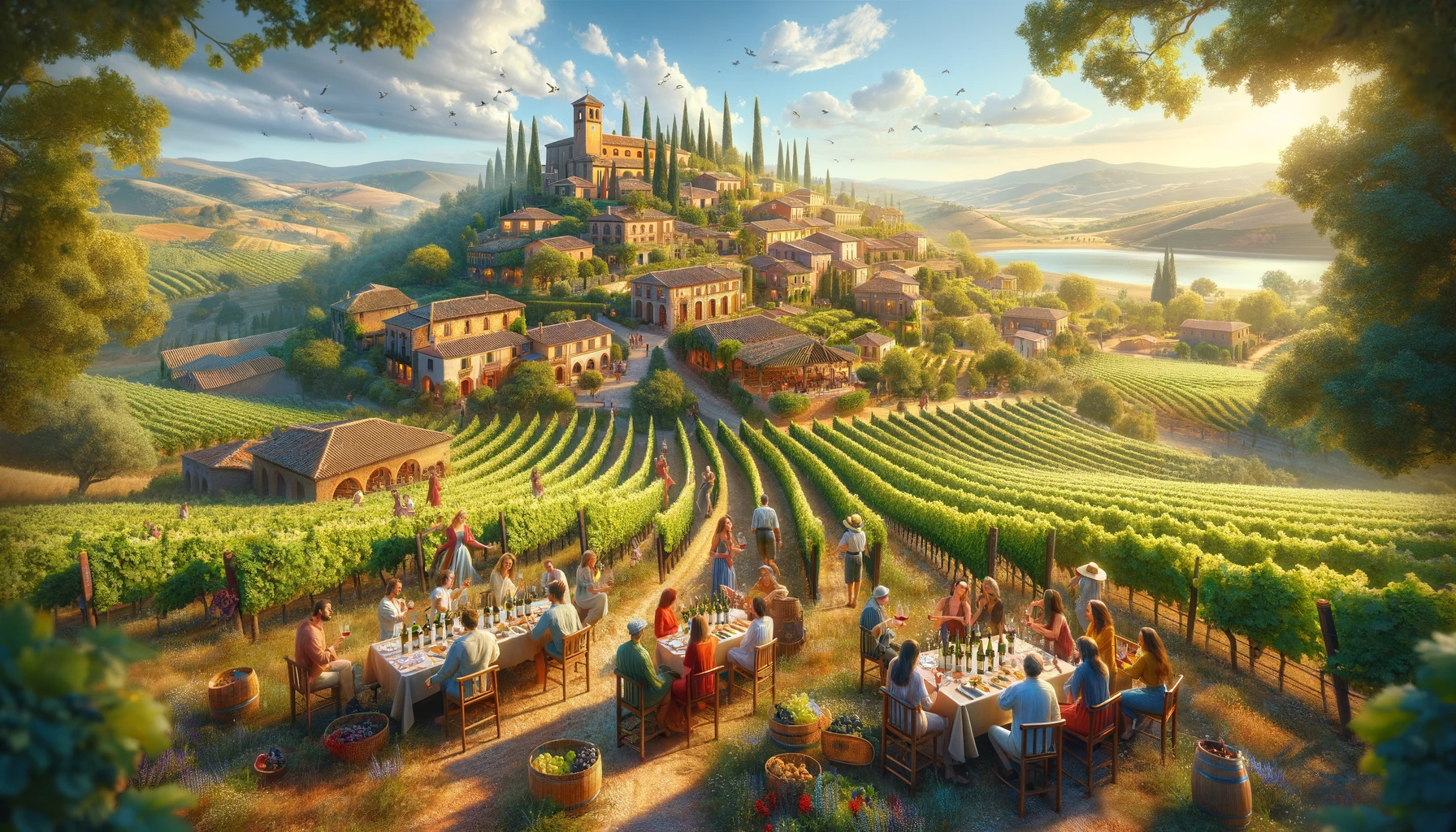
Conclusion: Exploring the Allure of Spanish Wine Tours
As our journey through the heart of Spain’s wine country concludes, it’s clear that the allure of Spanish wine tours transcends the simple act of wine tasting. These tours offer a deep dive into a world where historical richness, diverse landscapes, and warm hospitality blend harmoniously, creating an experience that’s as enriching as it is delightful.
The historical tapestry of Spanish winemaking, woven with centuries of tradition, innovation, and passion, is palpable in every vineyard and winery. It’s a history that’s not just told but is tasted in every glass of wine. The diversity of the landscapes, from the rolling hills of Rioja to the sun-kissed plains of Ribera del Duero, provides a scenic backdrop that enchants the senses and captivates the heart. Each region, with its unique climate and terroir, contributes to the distinctive character of its wines, offering a taste of place that is as profound as it is unique.
But perhaps the most compelling aspect of Spanish wine tours is the warm hospitality that greets every visitor. In Spain, wine is more than a beverage; it’s a way of bringing people together. The winemakers, sommeliers, and local communities you encounter on your journey are not just hosts; they are storytellers and custodians of their land’s legacy. They invite you into their world with open arms and shared tables, turning every tasting and tour into an opportunity for connection and camaraderie.
Spanish wine tours are, therefore, more than just a destination for wine lovers; they are a journey into the soul of Spain. They offer a chance to not only taste some of the world’s finest wines but to experience the spirit of a country rich in beauty, tradition, and a love for the finer things in life. Whether you are a seasoned wine connoisseur or a curious traveler, the wine regions of Spain promise an unforgettable adventure, filled with discovery, delight, and the joy of exceptional wines.



